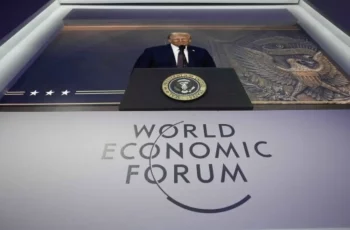
The reactivation of the UN snapback mechanism has placed Iran under renewed pressure at a moment of growing global instability. Designed as a safeguard in the 2015 Joint Comprehensive Plan of Action (JCPOA), the snapback provision restores international sanctions if a party is deemed in violation. For policymakers in Washington, the expectation is often framed in binary terms: either Iran escalates in response or quietly concedes. This framework, however, fails to capture the strategic complexity of Tehran’s approach. Iran is far more likely to adopt a hybrid strategy that combines calibrated resistance with pragmatic diplomacy leveraging global power shifts to avoid isolation while preserving deterrence.
Escalation remains one of Iran’s available tools. Tehran could accelerate enrichment activities or expand centrifuge capacity, signaling its ability to raise the nuclear stakes. Such measures would be provocative but not unprecedented. The International Atomic Energy Agency has repeatedly reported fluctuations in Iran’s enrichment levels, often tied to the broader diplomatic climate. These actions do not necessarily indicate an intent to weaponize but serve to remind external actors that pressure comes with costs and that time is not on their side.
On the other hand, Iran also has incentives for pragmatic restraint. By moderating its nuclear advances and engaging selectively with Europe, Tehran can exploit divisions within the Western camp. The European Union, while aligned with Washington in principle, has often expressed interest in preserving channels of dialogue and avoiding escalation that could destabilize the Middle East. Tehran’s history of signaling flexibility when confronted with unified pressure suggests it may again seek openings for engagement with European capitals or with regional states that are increasingly invested in stability. Initiatives such as the International North-South Transport Corridor, linking Iran to Russia and India, demonstrate Tehran’s effort to keep open economic alternatives despite sanctions.
The more likely outcome, however, is a hybrid strategy that mixes deterrence with readiness to negotiate. In practice, this could mean advancing nuclear capabilities in a controlled way while simultaneously engaging in diplomatic gestures that keep the door open for talks. One key dimension of this strategy involves the Strait of Hormuz, through which a fifth of globally traded oil passes. Iranian officials have long insisted they do not intend to close the strait. Yet renewed sanctions could prompt Tehran to take steps that complicate maritime traffic indirectly for instance, through heightened inspections or signaling security risks. Even without outright closure, such measures could increase insurance premiums on shipping, raising global trade costs and amplifying the economic ripple effects of isolating Iran.
Meanwhile, Tehran is likely to deepen its partnerships outside the Western sphere. Closer ties with Russia and China, as well as participation in groupings such as BRICS and the Shanghai Cooperation Organization, provide Iran with platforms to counterbalance Western sanctions. These alignments do not eliminate economic hardship, but they offer political legitimacy and signal that Tehran is not without options. For many in the Global South, the selective application of international law seen in the snapback’s reactivation reinforces the sense that the global system is unevenly applied. Iran, by aligning itself with emerging multipolar blocs, taps into this broader skepticism of U.S.-centric order.
This dynamic underscores why Washington should resist reducing Iran’s strategic choices to escalation versus retreat. A purely confrontational stance risks driving Tehran closer to powers that seek to challenge Western dominance, while assuming capitulation ignores Iran’s demonstrated resilience. The Islamic Republic has endured more than four decades of sanctions and external pressure, during which it has adapted both economically and politically. While sanctions impose real costs, they have also pushed Iran to cultivate self-sufficiency and alternative networks, outcomes that complicate efforts to isolate it further.
In the end, Iran’s response to the snapback mechanism will likely reflect its dual imperatives: to deter adversaries while avoiding the kind of confrontation that could threaten regime survival. A hybrid strategy allows Tehran to pursue both escalating enough to raise costs for its opponents while leaving space for negotiation under favorable conditions. For Washington, acknowledging this reality is crucial. Misreading Iran’s strategy as either reckless escalation or quiet retreat risks reinforcing policies that exacerbate tensions without offering pathways to de-escalation.
Written from Tehran, this perspective reflects the local realities of a country navigating one of the most consequential geopolitical challenges of 2025. If U.S. policymakers wish to avoid miscalculation, they must move beyond binaries and consider the adaptive strategies that Iran has honed in a shifting, multipolar world.










Comments